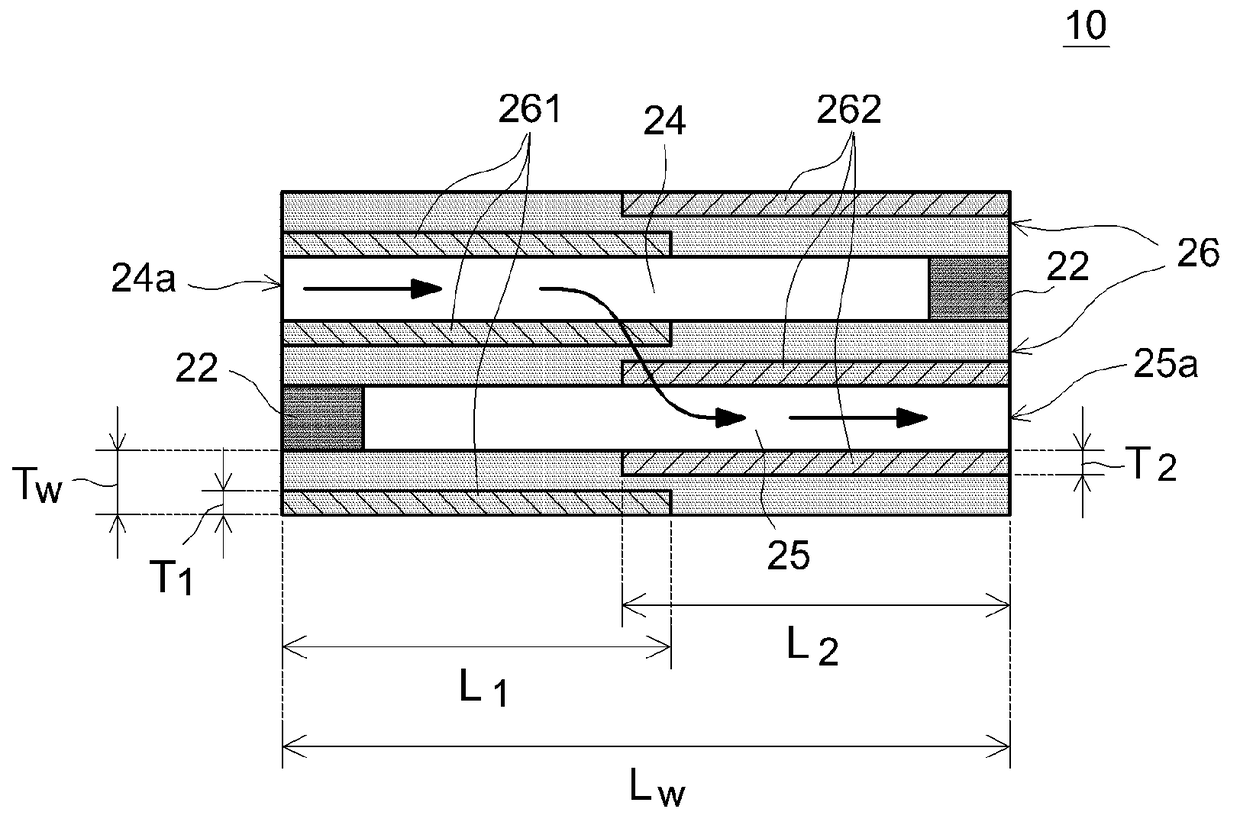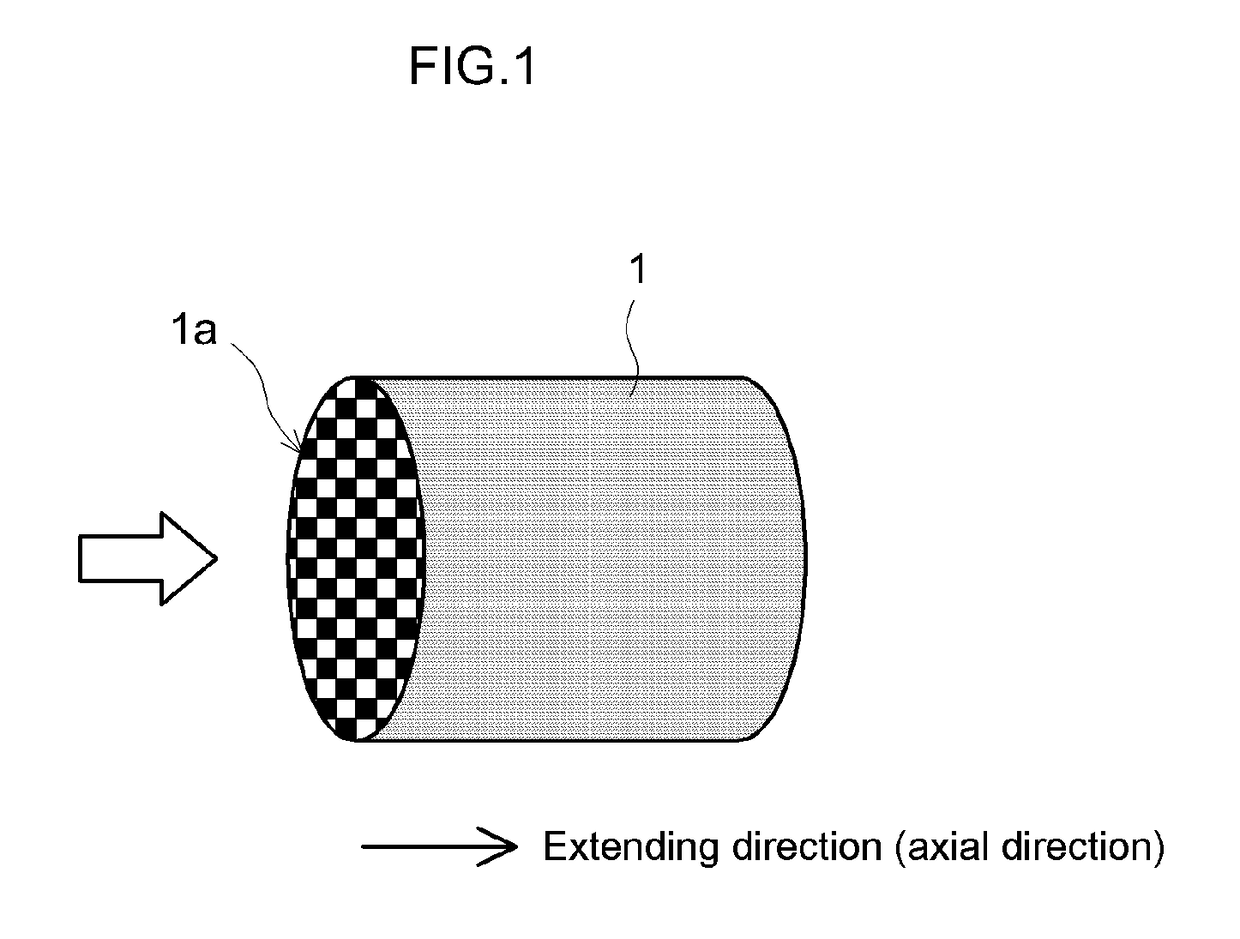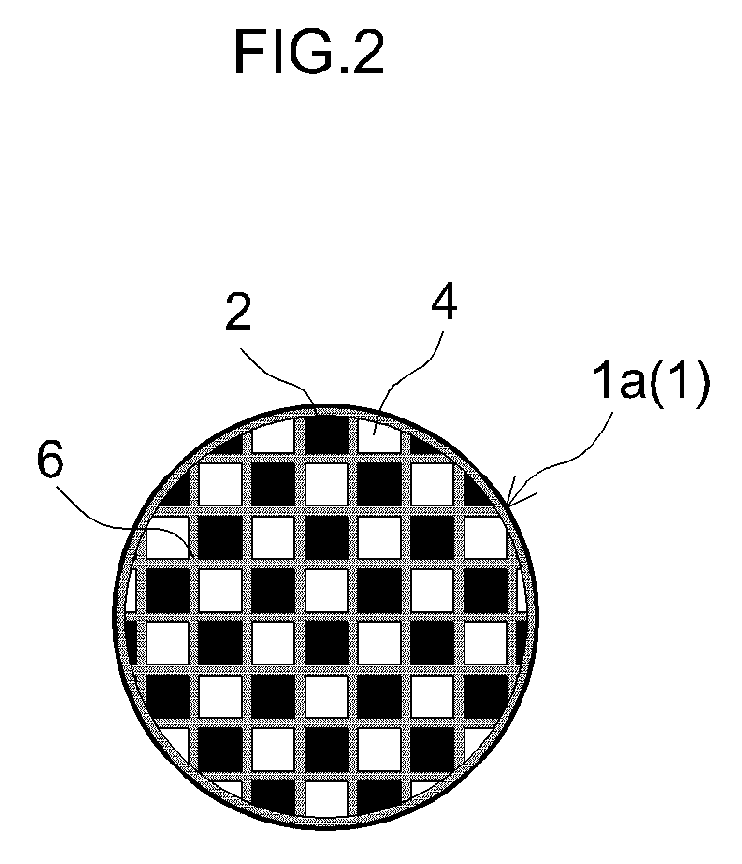Exhaust gas purification catalyst
a technology of exhaust gas and catalyst, which is applied in the direction of physical/chemical process catalyst, metal/metal-oxide/metal-hydroxide catalyst, separation process, etc., can solve the problems of exhaust emissions deterioration and excessive pressure loss, and achieve better suppressed pressure loss, efficient utilization, and improved efficiency
- Summary
- Abstract
- Description
- Claims
- Application Information
AI Technical Summary
Benefits of technology
Problems solved by technology
Method used
Image
Examples
example 1
[0055]A cordierite honeycomb substrate having a cell count of 300 cpsi (cells per square inch), a volume (refers to the bulk volume of the whole article, also including the volume of the cell flow paths) of 0.9 L, a total length of 105 mm, an outer diameter of 103 mm, a partition thickness of 0.3 mm, and a porosity of 59% was prepared as the substrate.
[0056]An appropriate amount of pure water was then mixed with 40 g of Al2O3 powder (γ-Al2O3) as the support and with an appropriate amount of an aqueous rhodium solution having an Rh content of 0.2 g as the catalyst metal. The obtained mixture was stirred and mixed and then dried and baked (500° C., 1 hour) to obtain a catalyst metal-loaded powder in which Rh was loaded on the Al2O3 powder. A catalyst layer-forming slurry was prepared by mixing this catalyst metal-loaded powder with an appropriate amount of pure water and a ceria-zirconia composite oxide solution that provided 60 g of CZ composite oxide after baking.
[0057]This slurry w...
example 2
[0060]An exhaust gas purification catalyst (Example 2) was produced proceeding as in Example 1, but making the length in the extending direction of both the first catalyst layer and the second catalyst layer 50% of the total length Lw in the extending direction of the partition.
example 3
[0061]An exhaust gas purification catalyst (Example 3) was produced proceeding as in Example 1, but making the length in the extending direction of both the first catalyst layer and the second catalyst layer 55% of the total length Lw in the extending direction of the partition. In this example, the first catalyst layer overlaps with the second catalyst layer over a length of 10% of the Lw in the extending direction. That is, in the central region of the partition in the extending direction, the first catalyst layer and the second catalyst layer are stacked in the thickness direction (with an intervening region in which no catalyst layer is formed), thus providing a multilayer structure.
PUM
| Property | Measurement | Unit |
|---|---|---|
| mass % | aaaaa | aaaaa |
| mass % | aaaaa | aaaaa |
| mass % | aaaaa | aaaaa |
Abstract
Description
Claims
Application Information
 Login to View More
Login to View More - R&D
- Intellectual Property
- Life Sciences
- Materials
- Tech Scout
- Unparalleled Data Quality
- Higher Quality Content
- 60% Fewer Hallucinations
Browse by: Latest US Patents, China's latest patents, Technical Efficacy Thesaurus, Application Domain, Technology Topic, Popular Technical Reports.
© 2025 PatSnap. All rights reserved.Legal|Privacy policy|Modern Slavery Act Transparency Statement|Sitemap|About US| Contact US: help@patsnap.com



